Child Abuse
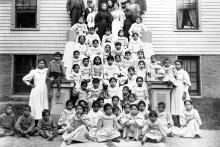
WHEN POPE FRANCIS visited Canada in July 2022, he said he was “deeply sorry” for the abuses inflicted upon peoples from First Nations by more than a century of Catholic-run residential schools. Francis decried the ways “many Christians supported the colonizing mentality of the powers that oppressed the Indigenous peoples,” which resulted in “cultural destruction and forced assimilation.”
To his credit, the pontiff acknowledged that his apology was not “the end of the matter,” and that serious investigation of what was perpetrated and enabled by the church was necessary for the survivors of the schools “to experience healing from the traumas they suffered.”
In the United States, the Seneca Nation is paving a path toward that healing process in their homelands, in particular from harm caused by a Presbyterian-run residential school.
A month after the pope’s apology, Matthew Pagels, then-president of the Seneca Nation — which historically inhabited territory throughout the Finger Lakes and Genesee Valley regions of New York — announced a new initiative to compile and catalog a list of residential school attendees.
To lead the effort, Pagels tapped Sharon Francis, a member of the Wolf Clan of the Seneca Nation and program coordinator at the Seneca Nation crime victims unit. Her passion, she said, is helping her communities heal from personal, intergenerational, and historical traumas.
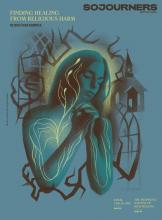
Healing from religious harm: Why compassionate community is part of the journey.
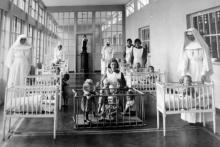
WHEN MARI STEED began searching for her birth mother in Ireland, she knew little about the system of secrecy and abuse that would lead her to co-found a social justice group to right its many wrongs. Born in 1960 in a convent-run “mother and baby” home in County Cork, Steed was one of more than 2,000 “banished babies” adopted from Ireland to the United States beginning in the 1940s. As an 18-month-old, she was taken to Philadelphia.
When Steed became pregnant as a teen, she was put in a Catholic-run home in Philadelphia and made to give up her child. In the mid-1990s, she decided it was time to find both the daughter who had been taken from her and the birth mother from whom she’d been taken. Her American family were “decent people,” Steed told me. “I don’t have any serious qualms with my upbringing. But I did begin to search for my mother to find out more about where I’d been.” She created a website to connect with other adopted people of Irish birth.
Eventually, Steed learned her mother, Josie, had given birth to her out of wedlock and had been born to an unwed mother herself. In Ireland, such circumstances put Josie on the full merry-go-round of church-and-state institutions before the age of 30: a county home, an industrial school, 10 years in a “Magdalene laundry,” and finally the mother and baby home. Steed, who lives in Virginia now, recalled she at first had no clue what all this information meant. “‘What are laundries?’ I didn’t even know what that was at the time.”
The answer led Steed down a rabbit hole of secrecy and obstruction. Originally founded in the 18th century as places of refuge for so-called “fallen women,” Magdalene laundries evolved into institutions where women and girls labored for no pay as penance for transgressing Catholic Ireland’s moral and class codes. In his book Ireland’s Magdalen Laundries and the Nation’s Architecture of Containment, Boston College professor James M. Smith described a system of interconnected institutions “including mother and baby homes, industrial and reformatory schools, mental asylums, adoption agencies, and Magdalen laundries.” (Ireland’s first such institution was called the Magdalen Asylum for Penitent Females, using an archaic spelling of Magdalene.)
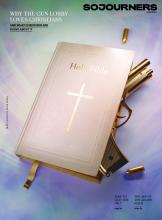
A fringe Christian ideology helped stoke an out-of-control gun culture. People of faith are working to take back the conversation.
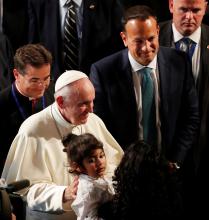
Taoiseach Leo Varadkar delivered a firm challenge to Pope Francis and the Catholic Church Saturday in Dublin Castle, where the two met with authorities, civil society, and diplomatic corps. Pope Francis visits the country after decades of revelations of abuse of women and children at the hands of clergy. Hundreds died from apparent malnutrition, unwed mothers lived in servitude, and many of their babies were illegally adopted.
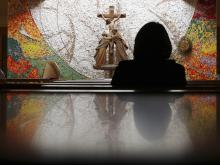
A religious order covered up the sexual crimes of an Irish priest who abused more than 100 children, some as young as 6, according to a new report.
The failures of the Salvatorian order to act on the crimes of a priest named “Father A” were outlined in a report released May 4 by Ireland’s National Board for Safeguarding Children in the Catholic Church.
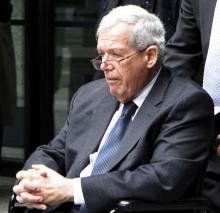
Gay students, supporters, and alumni at Wheaton College, a top evangelical Christian school that counts former House Speaker Dennis Hastert among its most famous grads, have told the administration they are “stunned” the college has not condemned the sexual abuse of boys that Hastert admitted committing when he was sentenced last Wednesday for fraud in trying to cover up the abuse.

Australian Cardinal George Pell, now a top adviser to Pope Francis, testified in a landmark clergy sex abuse inquiry that the Catholic Church made “enormous mistakes” in trying to deal with the scandal. Speaking to an Australian commission investigating the church’s response to abuse, Pell — who had previously been archbishop in Sydney — also said that during the 1970s he was “very strongly inclined to accept the denial” of a priest accused of abuse.
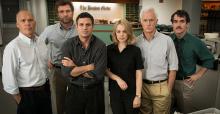
It is just a single line of dialogue from Spotlight, up for Best Picture and five other Academy Awards Feb. 28, but it could be a movie in itself. It’s an allusion to an entire unknown chapter in the history of the Catholic Church sex abuse scandals: the role of National Catholic Reporter in first uncovering the clerical conspiracy to shield abusing priests.
“Have you read Jason Berry’s book? He wrote about the Gauthe case,” an abuse survivor asks the team of investigative reporters featured in the film.

One of the two victims of clerical sexual abuse serving on a Vatican commission set up by Pope Francis has apparently been sidelined. The Holy See on Feb. 6 said Peter Saunders, a British Catholic who was abused by Jesuit priests as a teenager, is taking a “leave of absence” from the Pontifical Commission for the Protection of Minors.

A few months before Robert W. Finn became bishop of the Catholic Diocese of Kansas City-St. Joseph, I interviewed him for The Kansas City Star about the challenges he might face when he replaced the much-loved Bishop Raymond Boland. Of course, neither Finn nor I had any way of knowing that a decade-plus later he would resign in disgrace, having been convicted of the misdemeanor crime of failing to notify law enforcement authorities about a suspected child-abusing priest in the diocese — a priest who now spends his time in prison.

The Roman Catholic Diocese of Duluth announced on Dec. 7 that it had filed for bankruptcy protection following a jury verdict last month that held the Minnesota diocese responsible for more than half of an $8.1 million judgment on behalf of a victim of sex abuse by a priest.
The Chapter 11 filing makes Duluth the 13th of nearly 200 U.S. Catholic dioceses to file for bankruptcy since 2004 because of the clergy sex abuse scandals. Regional organizations of two religious orders have also sought bankruptcy protection.
The Duluth award was one of the highest single monetary compensations for a survivor of clergy abuse, experts said. It was made possible thanks to a Minnesota law that lifted the statute of limitations on civil claims for sex abuse.

There are many reasons for divorces and one of them is domestic violence. It’s true that there are women and men who experience domestic violence and never leave the marriage; they only want to cleave while others leave for their dear life. Domestic violence can be viewed as family violence but there are family members from whom we may rarely hear in these situations, namely children. Most certainly, domestic violence impacts the perpetrator and victim yet if there are children in the same space, they, too, will be affected. They, too, may even be beaten, battered, and bruised. This is the blues-inflected struggle of life.
The book of Mark focuses a lot on the suffering of Jesus. Pain seems to have some privilege in the way Mark preaches the gospel. He keeps it real. Mark is a truth-teller because even today many travel a trail of tears. The level of pain and the type of pain vary. But the honest truth is that life is not a bouquet of sweet-smelling roses. There are thorns and fractures. There is brokenness — broken bodies and relationships — so it is of no surprise per se when we see Jesus and the Pharisees engage in a conversation about marriage and divorce, topics that may heighten our awareness of human brokenness in our society. It’s no secret that many marriages fail and end in divorce, whether they are people of faith or not.

On his first full day of the visit, Francis praised U.S. bishops for their “courage” in facing the difficult moments of the explosive clergy abuse scandal “without fear of self-criticism and at the cost of mortification and great sacrifice.”
Listeners, however, were shocked, mindful that the church has spent hundreds of millions in settlement payouts — often after years of protracted legal fights — to compensate for decades of bishops who protected, even promoted, abusive priests.
He sounded “tone-deaf,” said Vatican expert the Rev. Thomas Reese.

A Sellersburg, Ind., pastor and fellow church workers are accused of beating multiple children in their care with a wooden paddle.
Clark County Prosecuting Attorney Jeremy Mull said the alleged abuse occurred at Crossroads Baptist Church, led by Pastor Gerald Harris. It operates a boarding academy complete with dormitories and classrooms for mostly out of state students, he said.
While parents, teachers and caretakers are allowed to discipline children “in a legal way,” Mull said, the bruising allegedly seen on the children constituted criminal abuse.

The Polish ex-nuncio — as Vatican ambassadors are called — had been due to stand trial on charges he paid for sex with children during his time in the Dominican Republic. Criminal proceedings were expected to get underway on July 11 but were halted after Wesolowski was hospitalized.
A lawyer for the former bishop said at the time he was unaware of Wesolowski’s suffering from health problems.
“I saw him two or three days ago, and, given his age and his state of mind, he was fine,” said Antonello Blasi, according to The Associated Press. The lawyer told the court that Wesolowski had been “willing and able” to come to court.
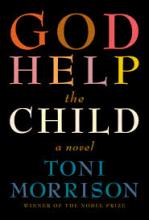
“WHAT YOU do to children matters. And they may never forget.”
This thread runs aggressively through Toni Morrison’s most recent novel, God Help the Child. The speaker is Sweetness, a woman who shares her family’s wounds from trying to pass for white, or “high-yellow,” for generations. Of trying to blend in well enough to drink at fountains, to try on hats in stores, to use the same Bible as whites during ceremonies. When her child and the novel’s focus, Bride, is born black, “midnight black, Sudanese black ... blue-black,” all the advancement Sweetness and her ancestors strove for dies. She loses her husband (who assumes she has been unfaithful), her social standing as a light-skinned woman, and any love for her child. “Her color is a cross she will always carry,” Sweetness says. “But it’s not my fault. It’s not my fault. It’s not my fault. It’s not.”
Bride grows up without the love of a mother’s touch and scorned for being so oddly dark, until she learns to use her color to make herself exotic and marketable. What may seem to be a character living into her identity as a black woman is really a façade in order to regain what was lost because of her skin. Of course, what Bride sees as progress is actually proof that she too has fallen into Sweetness’ obsession with what Morrison described in a recent NPR interview as “skin privilege—the ranking of color in terms of its closeness to white people or white-skinned people and its devaluation according to how dark one is and the impact that has on people who are dedicated to the privileges of certain levels of skin color.” But while race and color as social constructs are themes in the book, they are not explored as deeply or given as much emphasis as childhood trauma.
As in some of Morrison’s other novels, magical realism conveys the battle between the past and the present, the spiritual and the physical, playing a poignant, visceral part in Bride’s journey. Bride goes through a literal metamorphosis, assuming it is penance for gruesome choices she made as a child to feel alive and as an adult to feel powerful. She is numbed to what true progress and success are, constantly trying to put a fragmented identity together until she can no longer get up and must face her trauma and changing body.
The only people in the novel who allow themselves to truly heal are a child named Rain and an ex-convict named Sofia. They speak to the power of self-forgiveness. Too often we carry the shame and hate handed to us by other people’s evil, whether from childhood trauma and abuse or complacency and apathy as adults. While we can and must be held accountable for our own mistakes, we must also be willing to take off the shroud of self-loathing and guilt, and move forward past trauma into self-acceptance and healing. Both Rain and Sofia, young and old, can see the power of blame and regret and refuse to walk that path, while Bride, her lover Booker, and her mother Sweetness will arguably always drag the sins of their forebears behind them.
“What you do to children matters. And they may never forget.”

In an unprecedented move, the Vatican on June 15 announced its former ambassador to the Dominican Republic, Jozef Wesolowski, would stand trial on charges he paid for sex with children.
Wesolowski, 66, who had the title archbishop during his five-year post in Santo Domingo, the Dominican Republic capital, was recalled to the Vatican in 2013. He was later the first person to be arrested inside the Vatican on child abuse charges.
He also faces charges of possessing child pornography during his stay at the Holy See and ahead of his arrest in September 2014, the Vatican said in a statement.

There is room and need for men’s stories in the narrative of ending violence against women.
In blending our separate and shared experiences we find common ground. Together they lead us to what Dr. King described as "the fierce urgency of now." Every action we take today will save others the pain and suffering that is in our collective past. We need to add male voices and stories to those of women who have been speaking out about violence for decades.
Today I work as a co-coordinator in Oregon for the We Will Speak Out campaign. Our goal is to bring faith communities into the movement to end domestic and gender-based violence. This not a women’s movement. It is a movement of all people of faith to speak up and speak out to end the use of power over women and children. It is a movement that walks with survivors in their healing journey. It is a movement that strives to live into Jesus’ commandment to “Love one another as I have loved you.”
The "Broken Silence" report commissioned by Sojourners and IMA World Health indicates that the main issue in keeping pastors from speaking out about sexual and gender-based violence is a lack of knowledge on the issue. By speaking our truth and sharing our history we provide both the common ground and urgency to take action—together and now.

When Baltimore Ravens running back Ray Rice was suspended for only two games for beating his fiancée (now wife), it became a dramatic public example of the lack of accountability for professional athletes. Only when a video came out showing Rice punching his fiancée so hard it knocked her unconscious, and then dragging her limp body from the casino elevator, did the NFL take further action. As new incidents of domestic violence and child abuse come out, many are calling for Commissioner Roger Goodell to resign or lose his job.
But this epidemic is about so much more than Goodell, whose lack of leadership is typical in professional sports. It’s about more than one team, one league, or sports in general.